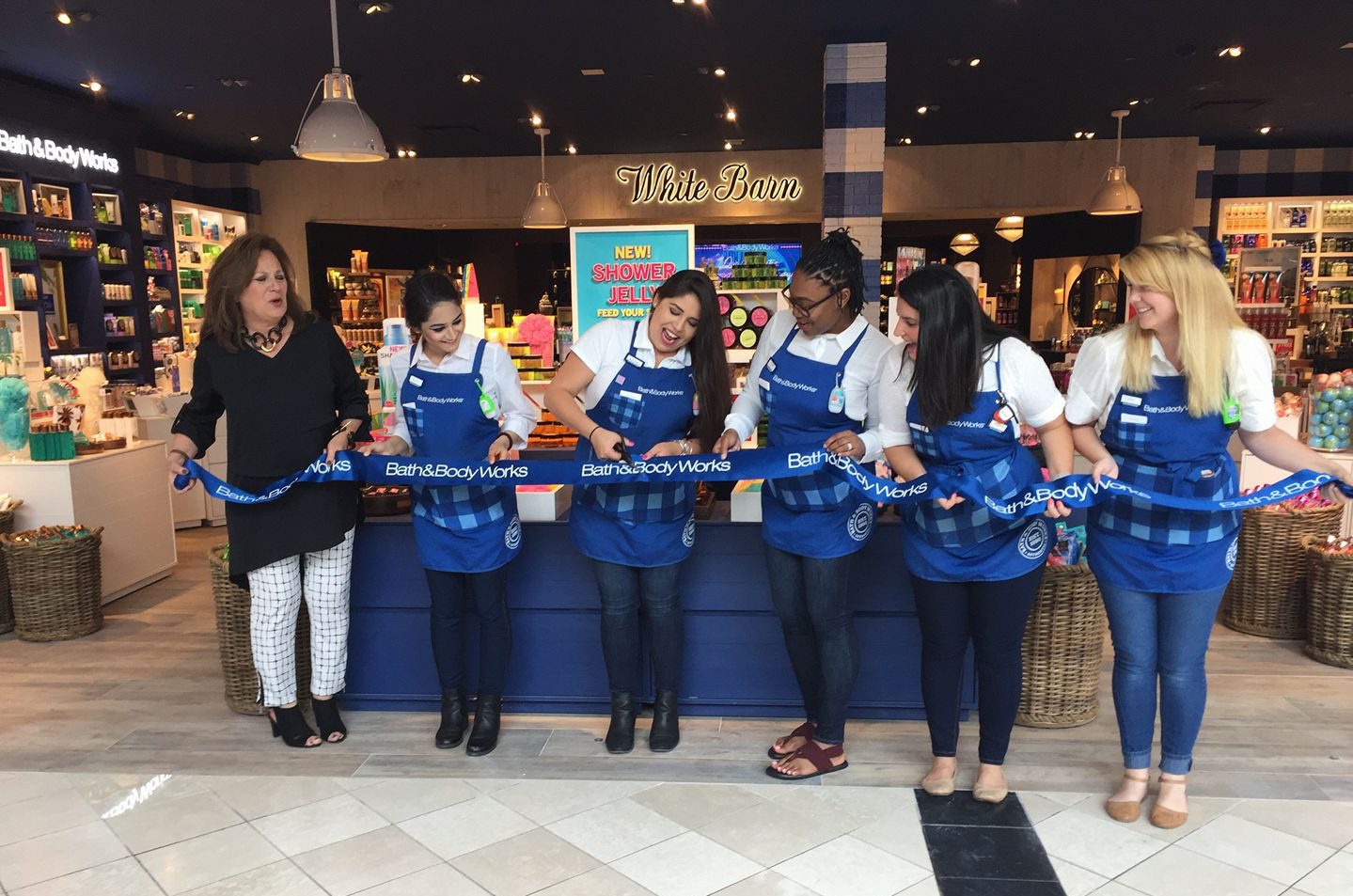Bath & Body Works: From Under-The-Radar Champ to L Brands’ New Star
Engaging in the retail landscape of women’s intimate and other apparel, personal care, and beauty products, L Brands is one of the few specialty retailers to have braved the American retail market slump and performed exceedingly well. Whereas its iconic brand, Victoria’s Secret, has captured all the dramatic headlines, the stunning and lasting success of Bath & Body Works usually gets overlooked. Yet, with the unprecedented advent of the COVID-19 outbreak, everything seems to change: Given that other mall brands go bankrupt around it, the candle-and-lotion chain has managed to avoid the same fate. Additionally, whilst its glamorous sibling Victoria’s Secret has floundered amidst the pandemic –most recently fumbling its announced spinoff with Sycamore Partners, Bath & Body Works has notched up notable success, gaining prominence to become the most critical growth driver for the company.
So, the question is: In an era when large swaths of retail face the fallout of COVID-19, struggling with decreasing sales and rapidly contract store footprints as well as navigating against tons of pandemic-related hurdles, how has Bath & Body Works not only survived but thrived? Let’s read on to explore.
Bath & Body Works: From Under-The-Radar Champ to L Brands’ Best Hope in The New Normal

The Bath & Body Works Brand Overview: How Sweet Does Success Smell?
As one of the world’s leading specialty retailers and home to America’s Favorite Fragrances offering a breadth of exclusive fragrances for the body and home, the retailer behemoth was initially established as a Body Shop knockoff. In fact, the Bath & Body Works line was first sold at Express clothing stores before opening up their first 1990 flagship location in New Albany, Ohio. Going for a “green” image, Bath & Body Works, “a division of the Limited Inc.,” marketed itself as “earth-friendly,” with the tagline of being “straight from the heartland.”
From its inception in 1990, Bath & Body Works become the globally largest specialty retail beauty brand with over 120 million transactions in 2014. For the past three decades, Bath and Body Works has reinvented the personal care industry with the introduction of numerous fragrant flavorful indulgences, including shower gels, lotions, candles, and accessories. With a focus on creating and offering the best products and an emphasis on innovation from nature, Bath and Body Works is destined to become the ultimate personal care destination.
Combining the introduction of spa products that are easily used at home with the incorporation of simple rituals into daily life, Bath and Body Works is committed to helping consumers improve their emotional and physical being. The Ohio-based retailer under the L Brands umbrella has accomplished this by combining traditional spa treatments with botanical and natural ingredients, then developing an extensive collection of advanced, easy-to-use personal care products with proven effectiveness.
Today, the presence of fragrant products by Bath & Body Works has been expanded to more than 1,900 Bath & Body Works and White Barn retail locations worldwide, with its remarkable sales figures exhibited as follows
| Net sales (millions) | $5,170 |
| Comparable store sales | 10% |
| Number of stores | 1,739 |
| Selling square feet | 4,566,000 |
| Note: These present 2019 Full-Year Results for company-owned store in the U.S. and Canada and direct sales. |
The Rise of Bath & Body Works Following the Tough Trajectory of Victoria’s Secret

How Victoria’s Secret Fell into Trouble…
In early May of 2020, L Brands and Sycamore Partners announced a “mutual termination” of their deal, after months of negotiations from in February, for the private equity firm to take a 55% stake in Victoria’s Secret for staggeringly $525 million. Their agreement was in doubt as of late April, when Sycamore Partners notified the apparel retailer that the deal was off due to L Brands’ failure to maintain normal business operations, as several stores closed amidst the “black-swan” outbreak.
As a result, the longtime star of women’s underwear, the brand that liked to claim it “essentially invented the specialty lingerie sector”, Victoria’s Secret was about to gather its things and quietly tiptoe out of the room.
Such breaking news was amplified by another huge move: As part of the deal, Les Wexner, the founder of L Brands – who had built the company from a single Upper Arlington store into a multibillion retail empire, agreed to step down. For the first time in its nearly 60-year history, someone other than Les Wexner—the longest-serving CEO in the Fortune 500—was going to run the retailing corporation.
Despite those two seismic events, the company executives seemed not to be very panicking. Although the iconic brand was struggling mightily in the face of digital disruptions, a cultural backlash, allegations of a misogynistic work culture and the ex-CEO Wexner’s connections to disgraced money manager Jeffrey Epstein, the executives were confident they could count on their new corporate anchor, another L Brands chain that had quietly grown into a retail “juggernaut”: Bath & Body Works
Given that the Ohio-based candle-and-lotion chain isn’t as sexy as its flashy sibling, Bath & Body Works stands high chances of making Wall Street swoon.
… More Attention Shifting to Bath & Body Works as The L Brands’ New Star
For almost a decade, sales for Bath & Body Works’s portfolio of soaps, lotions and candles have been on a rise every single year while its quarterly earnings growth easily outpaced nearly every mall-based retailer. With more than $5 billion in annual revenue and an extremely loyal customer base by 2019, the Ohio-based company is considered an outlier in the retail sector on a lifeline.


The lasting success of Bath & Body Works was validated in 2020 when its sales surged 13% in the U.S. and Canada to $1.2 billion despite all the economic chaos within the retail landscape. In the light of the economic crash resulted from the global pandemic along with the cancellation of the much-vaunted Victoria’s Secret sale, the new flagship brand was ready to rise to the occasion.
During the pandemic, the strengths of Bath & Body Works quickly emerged, with consumer appetite for hand sanitizer, soap, and the ‘affordable luxury’ of body care skyrocketing.
According to L Brands CEO Andrew Meslow, soap and sanitizer have historically composed about 15% of the total business, yet during the outbreak, these categories enjoyed “tremendous growth.” “We expect that awareness around the importance of that category — washing your hands, using sanitizers when you’re not able to wash your hands — will continue even as the pandemic itself hopefully starts to wane away.”
When it comes to body care products, this segment has also been a critical business area for the company, particularly as stressed and anxious consumers turn to “affordable luxury” amid high unemployment rates and an economic recession. “[The body care] business has always been relevant to our customers, is even more relevant to her today as an affordable luxury, a way for her to treat herself even when she’s unable or unwilling to spend money on perhaps other larger-ticket commodities,” stated Andrew Meslow. “That is an inexpensive way, whether for self-indulgence or to give us a gift.”

Furthermore, as shared by the new L Brands CEO, Bath & Body Works did benefit from sequestered Americans seeking ways to spruce up their homes, which fostered growth in home fragrance — a category the company has doubled down on in recent years even before the pandemic.
“Our important home fragrance business that has grown substantially over the last half-decade, also tremendously important to her, both now during the pandemic when we’re using our homes as a place of work, a place of teaching in school and a place of refuge and solace,” commented Andrew Meslow.
Another huge advantage for Bath & Body Works is that the company has manufactured nearly all of its products in the U.S., with a large local presence at New Albany’s Personal Care and Beauty Innovation Campus. Such an advantage has truly empowered the L Brands’s new star to “really chase into trends.”
And as already mentioned, the business performance of Bath & Body Works is more than impressive. Whereas L Brands’ overall second-quarter sales dropped 20% from the previous year, Bath & Body Works witnessed an upward trend of 13%, with online sales jumping a staggering 191%. Actually, its business activities are so flourishing that while other retailers were forced to close stores permanently and/or teeter on the brink of bankruptcy, Bath & Body Works did plan to open 27 new locations in 2020.

For the time being, almost every one of Bath & Body Works’ more than 1,000 stores has reopened. With a view to ensuring safety, store managers are trained to take the temperature of employees, who are required to wear masks and, in some cases, gloves; besides, the company has also reduced hours and increased cleaning.
In regard to customer-related aspects, all stores have significantly limited the number of customers allowed inside to 30% at maximum. In several stores, fixtures have been rearranged to maintain 6-foot distancing and to help form lines for the checkout counters, which all have now-familiar plastic shields. Despite well addressing some safety concerns, these new arrangements pose a handful of challenges – one of the biggest challenges is: How do customers smell a fragrance with a piece of fabric over their noses?
“We’ve seen comments about that in social media,” shared an L Brands executive. “They say, “I had to buy a candle to test the smell.’”
Bath & Body Works: Its Enduring Formula for Lasting Success
Beyond any doubt, Bath & Body Works emerges as a desirable success story within the retail sphere – a rare mall-based store that has defied the decline of brick-and-mortar retail as well as the ups and downs of other mass-market beauty brands, especially amidst the economic lockdown resulted from the COVID-19.
“It’s not necessarily that it’s the coolest or most innovative,” shared MaryLeigh Bliss, Vice President of content at YPulse, which in a recent survey found teen girls ranked Bath & Body Works as the #1 health and beauty brand, taking into account attributes such as the level of trustworthiness. “But because of consistency and accessibility and affordability, they manage to rise to the top.”
According to a May report by the market research company Kline Group, the retailer under the L Brands umbrella was ranked 3rd in the U.S. beauty sales behind Dove and L’Oréal in 2019. Besides, it remains #1 within the category of home fragrance, with nearly a third of its sales coming from candles and diffusers.
In the original letter to L Brands ex-CEO Les Wexner, Barrington chief James Mitarotonda stated that “the performance of Bath & Body Works has been exceptional.”
In regard to Bath & Body Works team, Stuart Burgdoerfer, Executive Vice President & Chief Financial Officer of L Brands, presented that, “They don’t bat a 1000%, they don’t get it right every time. But their major books of business are performing well and where they’ve introduced compelling new fashion and newness in their key items, key categories they’ve got a strong consumer response. So that’s got them excited and they leverage a very fast supply chain to manage the risk of that. They do a good job of it.”
In addition to product accessibility and affordability, MaryLeigh Bliss also appreciates Bath & Body Works’s team for its efforts in developing “Instagrammable” products while always “keeping up with trends” such as leveraging the mermaid and cactus imagery. Indeed, this serves as a winning attraction for the youth to consider purchasing beauty products like those offered at Bath & Body Works a small luxury.

Another crucial ingredient for Bath & Body Works’s success is that the candle-and-lotion chain is dedicated to delivering a memorable and enjoyable shopping experience, offering sinks to try products and cheery sales associates in aprons who greet shoppers when they walk in and tout current promotions. In fact, the store itself is a seamless “sensorial” experience at the very moment the door opens.
“There’s an element of fun and experience and discovery that people like in those stores,” said Sucharita Kodali, VP, Principal Analyst at Forrester. “They’re very tactile and they’re not easily replicated online because you can’t smell through the internet. They’re very social experiences.”
What should be noted is that the mall chain is thriving in an environment in which it has little competition. Fellow mall brand The Body Shop was its biggest competitor, yet it currently only has around 100 store locations in the U.S. market. Plus, whereas Rituals, the Dutch bath and body store that is prevalent in Europe, has just begun to make inroads in the U.S. market, its assortment costs more.
“They’ve definitely built themselves a pretty interesting business model that doesn’t have a tremendous amount of pure-play, like-for-like competition,” commented Erinn Murphy, Managing Director and Senior Research Analyst at Piper Sandler.
The Bottom Lines
Whilst the huge video screens may showcase images of Victoria’s Secret Angels prancing down runways wearing wings, high heels, and lacy unmentionables, the wholesome images of soaps and candles from Bath & Body Works has captured more and more attention within the beauty landscape. As one once being “overshadowed” by all the dramatic headlines about Victoria’s Secret and parent company, L Brands, Bath & Body Works has emerged as the last brand standing COVID-19 economic crisis, becoming L Brands’ best hope in a post-Wexner era as well as an outlier in the retail scene on a lifeline.









